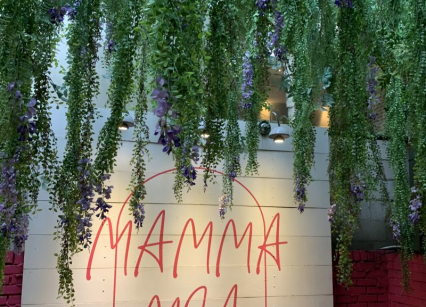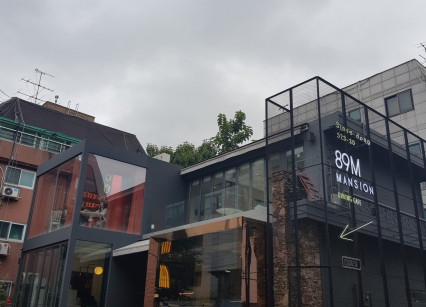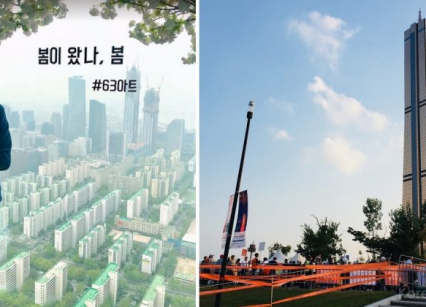Today I will continue my previous post about Gyeongju, South Korea’s ancient capital.
If you will visit Gyeongju city, the visit of royal tombs is must to do. The city is full of ancient royal mounds, that you can explore. After the death of Silla Kingdom’s kings and queens and other members of royal family, they were buried and then built mounds over. Many tombs have been excavated and lots of relics discovered from there.

Day 2(Refer to Day 1)
Tumuli park or Daereungwon Tomb Complex (대릉원)
Tumuli park or Daereungwon Tomb Complex (대릉원) has twenty three large tombs. The main highlights of complex are Cheonmachong (formerly Tomb No.155) and Hwangnamdaechong tomb.
Cheonmachong tomb (천마총) means “Sky horse” and was for unknown king of the Silla Kingdom. The tomb was excavated in 1973 and 11,500 artifacts were discovered from there. The painting of a White horse is one of the main discovered artifacts. The horse was painted with eight legs and wings on its feet. The fact that king was buried with horse shows the importance of horse culture in Silla Kingdom society and the role of the king in shamanism practiced by the people. Another discovered treasures such as a gold crown and a gold girdle indicates that a king was buried in the tomb. The gold crown is unique artifact of Silla, because it has a large cluster and it’s full of jade and spangles.
Hwangnamdaechong tomb (황남대총) is a double tomb, where separately in each tomb were buried a king and queen. The king was buried beneath the South Mound and the queen beneath the North Mound. The unique artifact was founded after the excavation from the queen’s tomb. Gold Crown was made using a high technique with putting of numerous curved pieces of jade. It’s highly significant artifact that help scientists to research the social and political status of the deceased.

You can also see how the excavation process is currently doing in Jjoksaem site (쪽샘), where around 700 new tombs were discovered. Jjoksaem is the eastern sector of Daereungwon Complex. Archaeologists say, that the tombs are began to be constructed at the end of the 3rd century before the time of wooden chamber tombs covered by stone and earthen mound. Tomb No. 44 is currently being excavated.


Tumuli park provides a great opportunity to walk around the structures of ancient Silla dynasty and explore the Korean history and culture.
Location: 9, Gyerim-ro, Gyeongju-si, Gyeongsangbuk-do
Operating Hours: 08:30 – 21:00
Admission Fees: Adults 2,000 WON / Children 800 WON
Cheomseongdae Observatory (첨성대)
Another incredible site is Cheomseongdae Observatory (첨성대). It is an astronomical observatory in Gyeongju. The observatory was constructed in the 7th CE in the Silla Kingdom and now it is one of the oldest observatory in Asia.

Designated on December 20, 1962, Cheomseongdae is 31st Korean national treasure. The meaning of the tower’s name is “star gazing platform”. It was constructed under the reign of Queen Seondeok (632-647). The construction process of tower took about five years. The structure has a cylindrical body with 9.17 meters high. The interesting fact, that the body is built out of 365 pieces of cut granite, symbolizing the number of days in a year. And, moreover, another more interesting fact, that the central hole or window separates the body into 12 layers of stones, symbolizing the 12 months in a year. The astronomy science in ancient Silla Kingdom had an important role, scientists explored and made star charts using the Cheomseongdae Observatory.
If you will visit the site in the evening you can see how the Cheomseongdae lights up.
Also the beautiful scene of Pink Muhly Grass you can see if your visit to Gyeongju will be in autumn. It’s usually turn pink and purple color in September and October. By visiting Cheomseongdae Observatory, don’t miss a chance to see that beautiful scene too^^ Be sure to prepare you camera or phone for amazing shots.

Location: 839-1 Inwang-dong, Gyeongju-si, Gyeongsangbuk-do
Operating Hours: 09:00~21:00 (Winter Time), 09:00~22:00 (Summer Time)
Admission Fees: free
Gyeongju Yangnam Jusangjeolli Cliffs (경주 양남 주상절리)
And the last destination in Gyeongju is Gyeongju Yangnam Jusangjeolli Cliffs (경주 양남 주상절리).

I have never seen such as beautiful place. It’s really incredible! Yangnam Jusangjeolli is very amazing volcanic rock formations and it’s became open as a tourist attraction from 2011. It was designated as Natural Monument No. 536 on September 25, 2012. Walking around the Yangnam Jusangjeolli Cliffs will be the perfect end of the day. Gentle salty breeze, sound of waves and view of the cliffs and sea will leave one of the best memories about Gyeongju.

Location: 405-3 Eupcheon-ri, Yangnam-myeon, Gyeongju-si, Gyeongsangbuk-do
If you will have more time to explore the ancient Gyeongju city, there a list of another recommended places to visit. Recommended places: Folk Craft Village, Woljeonggyo Bridge, Gyeongju Seongdong market, Gyeongju World Culture Expo Park, Golgulsa Temple.
Don’t forget to comment if you have any more recommendations or tips related to this part of amazing Gyeongju trip. Thanks for reading! Have a nice trip.







